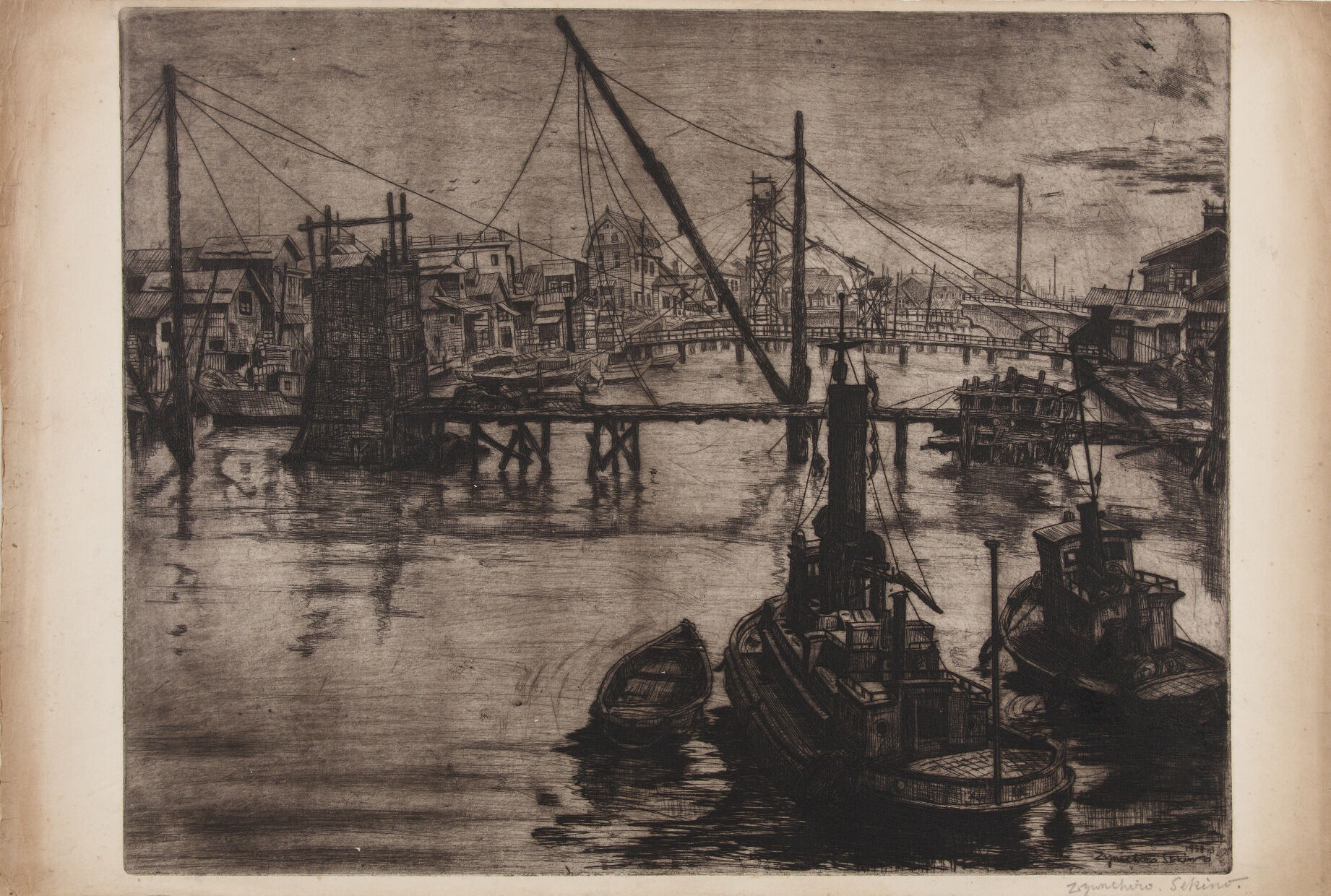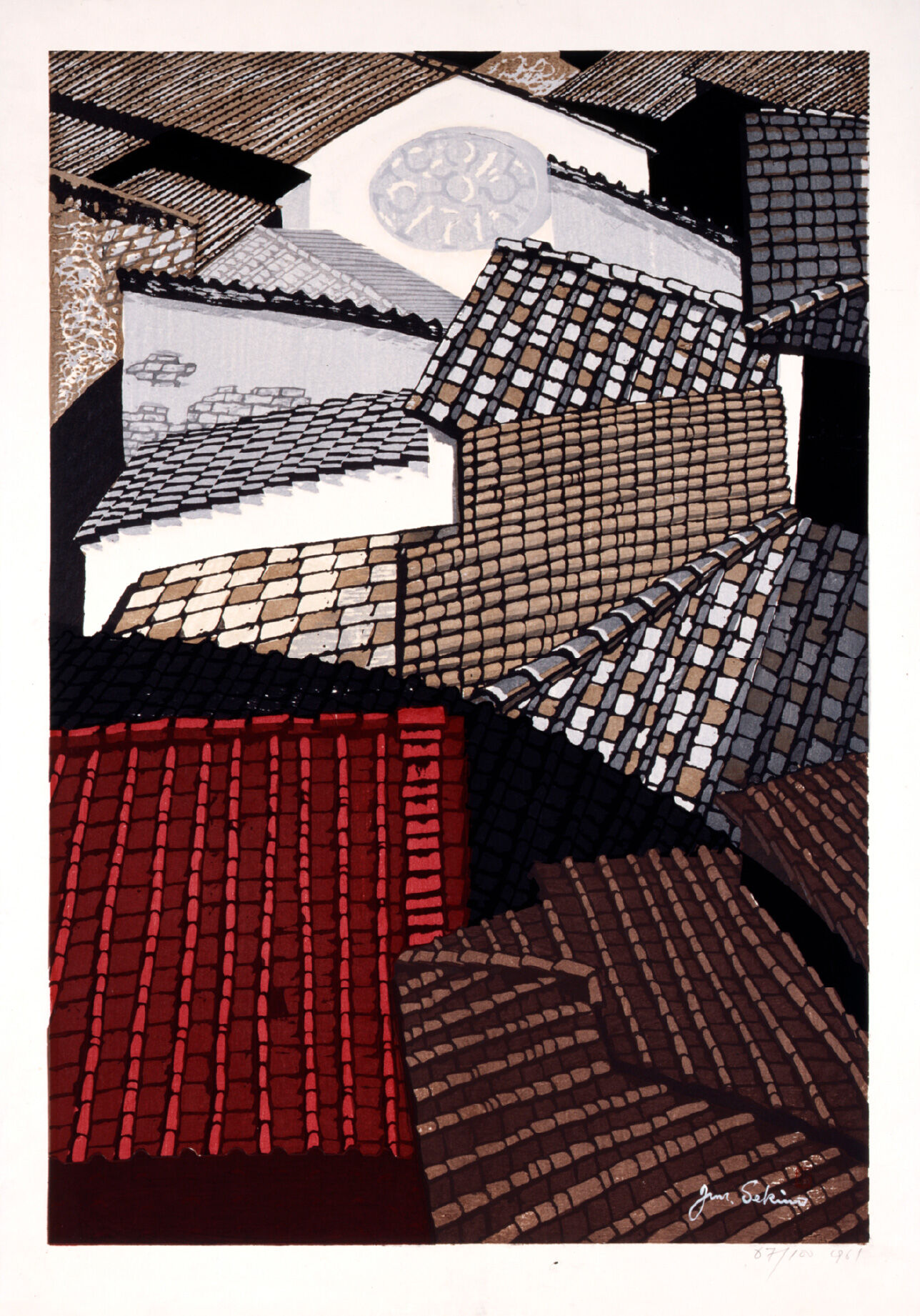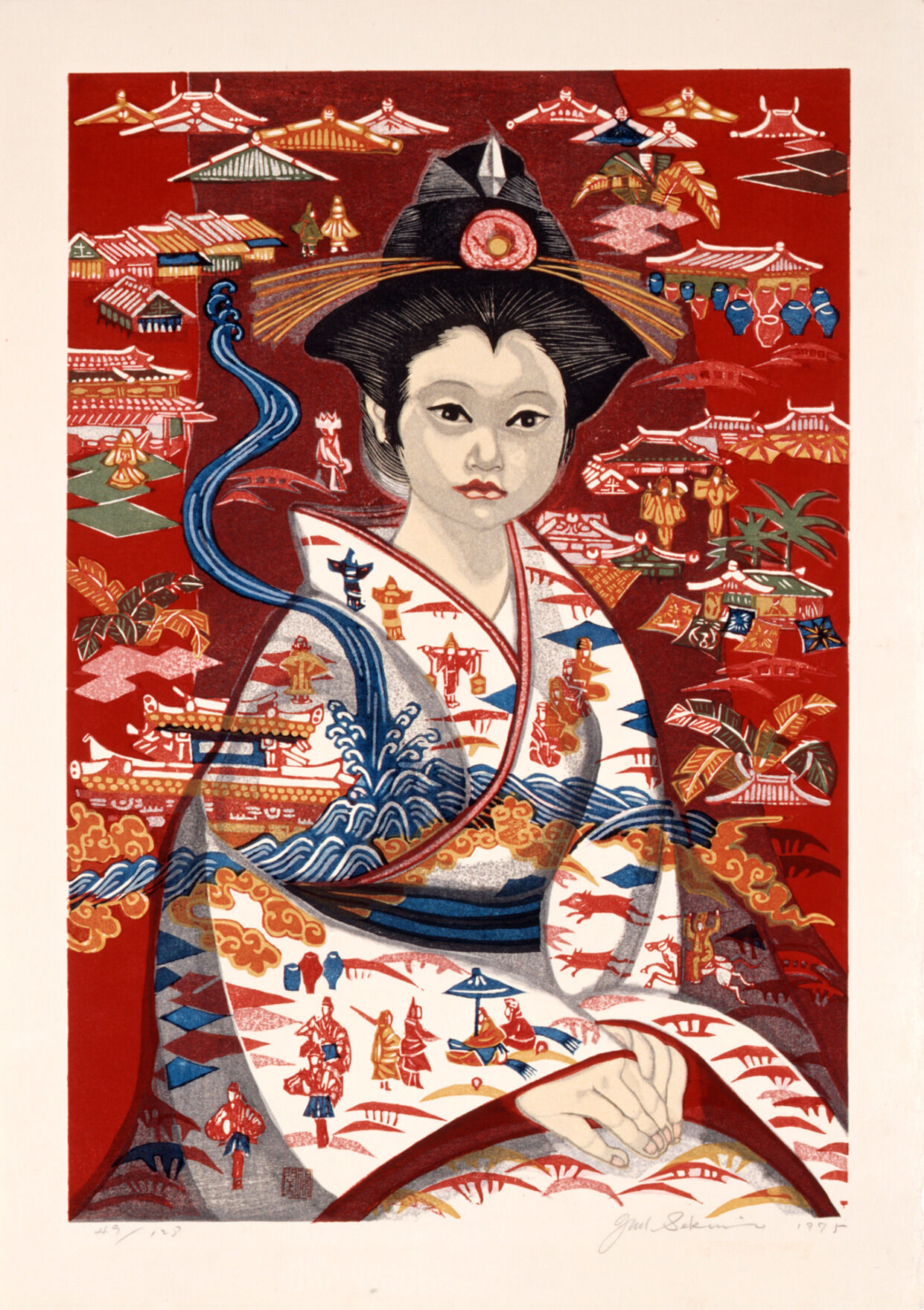SEKINO Jun-ichiro[1914-1988]
SEKINO Jun-ichiro was born in Aomori City in 1914. He became interested in Wood Block printmaking while still a student at Aomori Middle School and joined a printmaking coterie magazine. Around the time of his graduation, he began to frequent the studio of KON Junzo. Originally from Hirosaki City, Kon had studied at the Hongo Institute for Western-Style Painting under OKADA Saburosuke and advance his painting career in Tokyo, but in the wake of the 1923 Great Kanto Earthquake, he returned home and devoted himself to the study of copperplate printmaking and lithography at a studio in Aomori City. Under Kon, Sekino studied copperplate and lithography techniques. Sekino’s works were accepted for various art exhibitions, starting with that of the local To-o Nippo newspaper, and later including those of the Japan Print Association and Bunten ( annual art exhibition sponsored by Ministry of Education). He was also recommended for membership in the Japan Print Association. In 1939, he decided to establish his career as an artist and moved to Tokyo. There, he became a disciple of ONCHI Koshiro, a central figure in the sosaku-hanga or “creative prints” movement. Sekino joined the printmaking group “Ichimokukai” (First Thursday Society) held at Onchi’s house and submitted works to the exhibitions of the Japan Print Association and Kokugakai Society.
In the 1950s, after the end of World War II, Sekino set up a workshop in his house in the Koenji neighborhood of Tokyo’s Suginami district and founded a copperplate printmaking group together with KOMAI Tetsuro. Amid postwar supply shortages, the members of the group worked to secure materials and equipment such as copperplates, ink, paper, and presses by procuring or creating them themselves. The group became a frequent workspace for many printmaking artists, starting with HAMAGUCHI Yozo and HAMADA Chimei and also including the young KANO Mitsuo, KOBAYASHI Donge, and NONAKA Yuri.
Inspired by overseas trends, abstract art became the mainstream in Japan beginning around the mid-1950s. However, even before World War II, Sekino had already been in close contact with the work of Koshiro Onchi, who pursued the unique creative potential of printmaking, so he felt at odds with the tendency to label works as “outdated” merely for depicting figurative subjects. His works from this time show many different kinds of exploration, from figurative portraits to attempts at geometric compositions with a strong focus on color and form as well as deformations. Eventually, Sekino broke free from the formal constraints of representation versus abstraction and developed his own distinctive style, in which he captured his impressions of subjects through a bold sense of color and skillful compositions. After returning from Europe and the United States in 1958, he produced works depicting the landscapes he had seen there, which won prizes at international exhibitions. Together with other artists of his generation, he helped the modern printmaking of postwar Japan to become highly appreciated internationally.
In 1957, Sekino moved to Chofu City on the outskirts of Tokyo. He continued printmaking in a new studio there and began what would become his life’s work, his “Fifty-Three Stations of the Tokaido Road” series. While woodblock landscapes and portraits were at the center of his creative activities, he produced a vast and diverse array of works combining different techniques such as copperplate and lithography before his death in 1988. His works have made their way into the collections of numerous museums in Japan and abroad, including the Aomori Museum of Art, Aomori City, the Chofu Local History Museum and Museum of Fine Arts Boston, British Museum.

《Construction Site of Tsutsumi River》
1938
etching on paper
35.8×46.5cm

《Roofs in Florence》
1959
color woodcut on paper
81.5×56.0cm

《Bingata (Traditional dyeing of Ryukyu)》
1975(昭和50)年
color woodcut on paper
63.0×46.0cm

